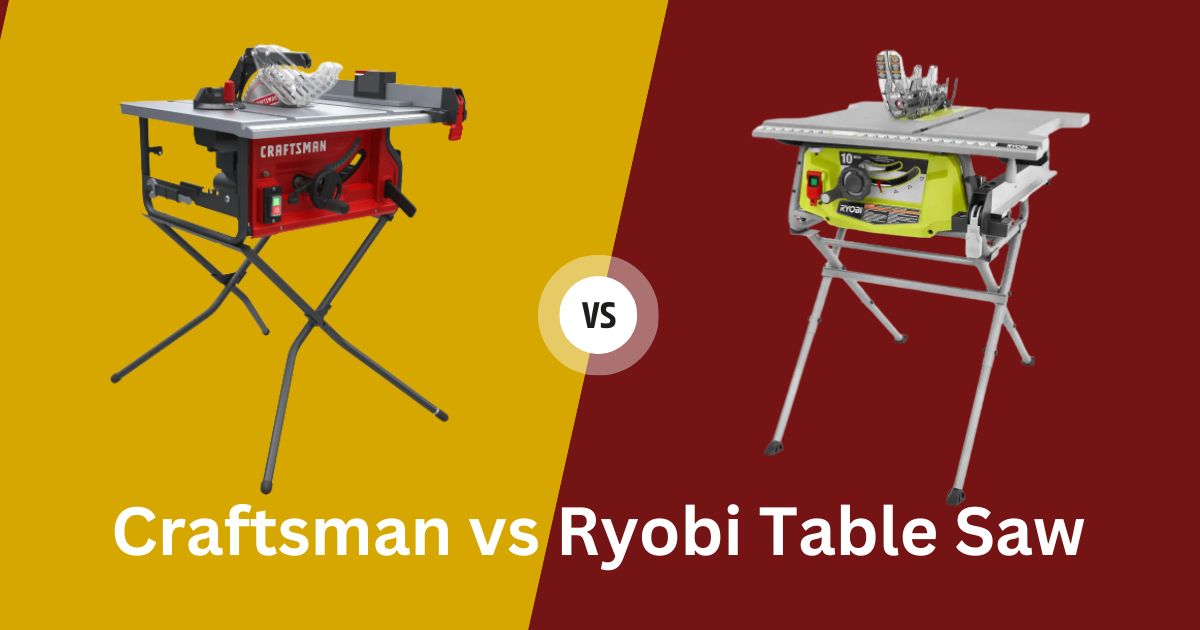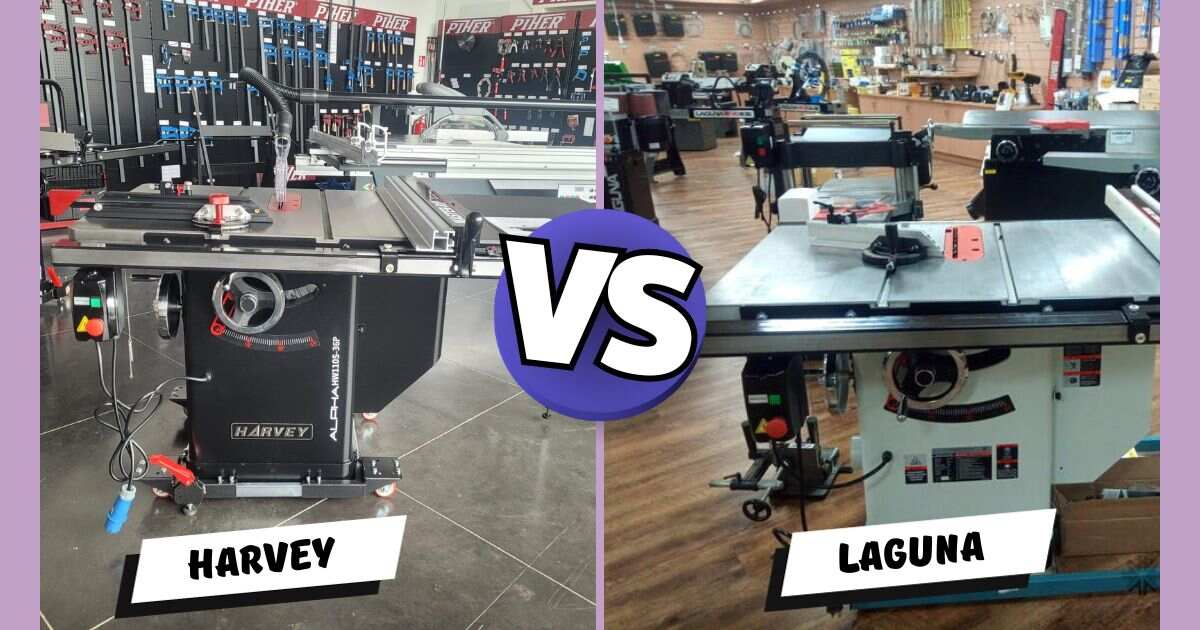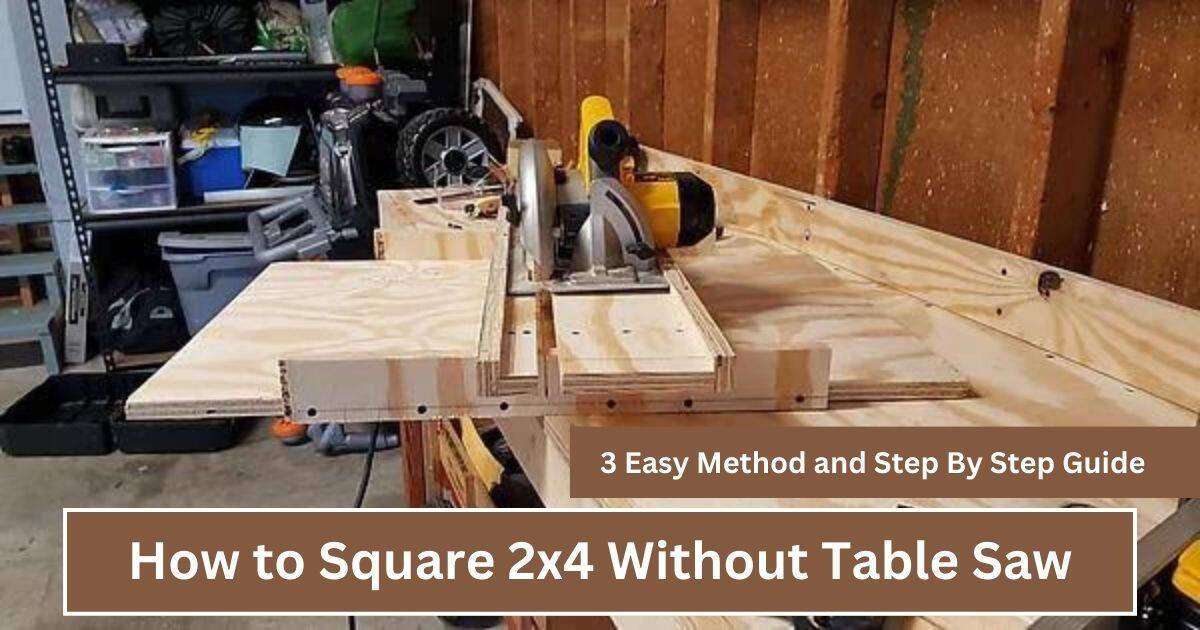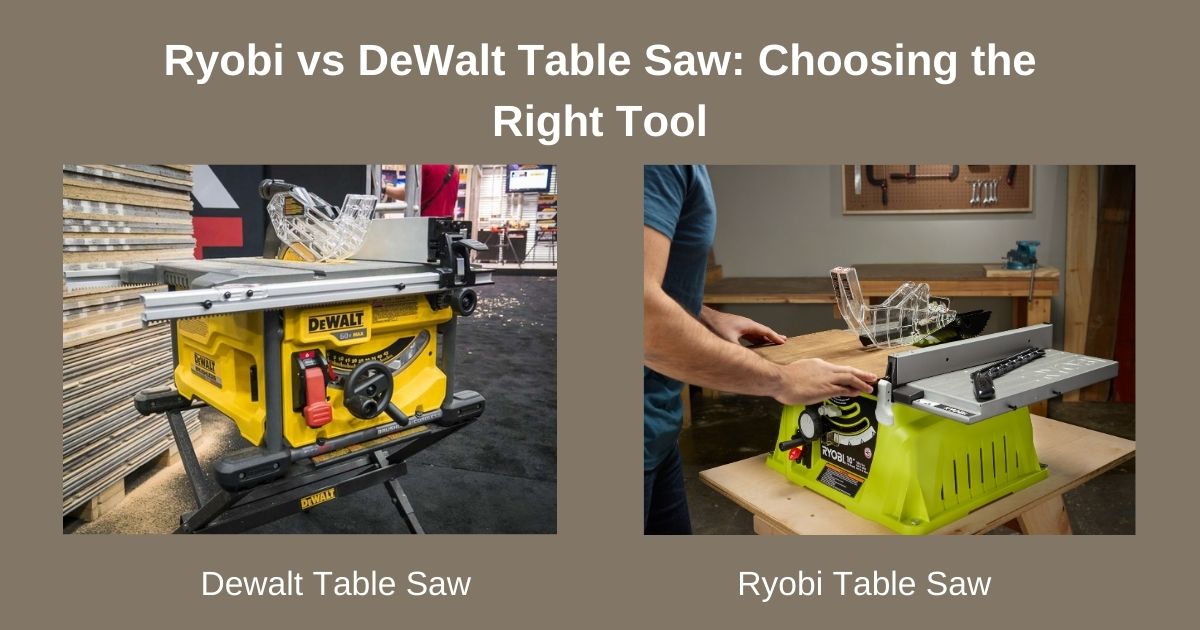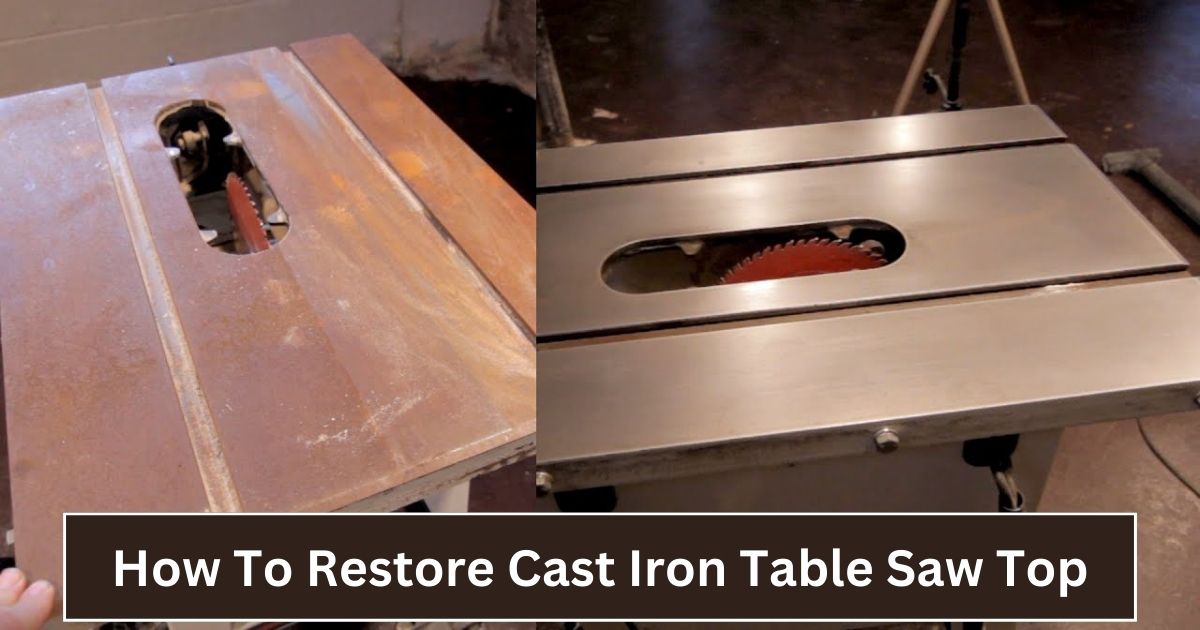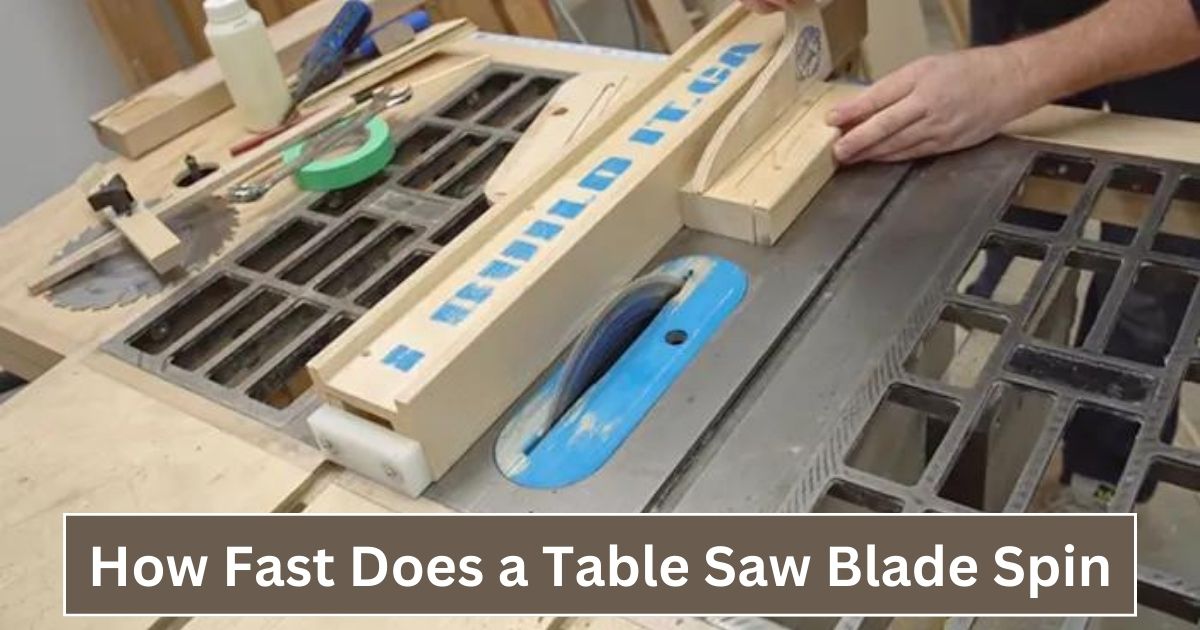When researching table saws, you’ve probably encountered the names Craftsman and Ryobi, two prominent brands in the power tool market. Both have their merits, but there are notable differences.
The main difference between Craftsman and Ryobi table saws lies in their target audience and build quality. Craftsman table saws are known for durability and precision, making them suitable for heavy-duty use, while Ryobi table saws offer affordability and versatility, catering to DIY enthusiasts and lighter projects.
Additionally, Craftsman often boasts more powerful motors, while Ryobi prioritizes portability and convenience.
So, let’s dive deeper into the Craftsman vs Ryobi table saw comparison to help you make an informed choice that suits your needs.
Read More: Ryobi vs Dewalt Table Saw: Choosing the Right Tool
Differences Between Craftsman vs Ryobi Table Saw
If you’re in the market for a table saw for your workshop, you might be curious about how Craftsman and Ryobi stack up against each other. Here are a few important distinctions to consider:
Brand Analysis: Craftsman vs Ryobi table saw
Craftsman is a well-established player in the industry, specializing in a range of areas including hand and power tools, construction equipment, automotive tools, and home improvement gear. Their products are highly regarded for their durability, reliability, and their ability to attract a dedicated customer base. Craftsman has developed a variety of table saws with different features to meet the diverse needs of customers.
Ryobi, a Japanese brand, is known for offering cost-effective and feature-rich products. They excel in producing electronic components, power tools, printing equipment, and construction hardware.
Ryobi’s table saws are known for their versatility and user-friendliness, making them suitable for both DIY enthusiasts and professionals.
Manufacturing: Craftsman vs Ryobi table saw
Craftsman table saws are crafted using materials such as cast iron, imparting a robust and long-lasting feel. Their stability and resilience, especially in the older Craftsman series, have earned them a strong reputation.
These saws are known to endure for many decades post-purchase, a testament to their solid construction.
On the other hand, Ryobi table saws often incorporate plastic components, making them lighter and more portable. However, this lightweight design can compromise their durability and render them more susceptible to damage.
Ryobi integrates various features, including laser guides and onboard storage, to compensate for this.
Performance and Motor Strength: Craftsman vs Ryobi table saw
Craftsman and Ryobi table saws are equipped with robust motors that are pivotal in determining the quality of cuts. The motor serves as the core of the saw and holds significant importance in woodworking.
In the case of Craftsman table saws, they feature high motor power, typically around 1 HP or 1-1/5 HP. This ensures the saw operates smoothly, delivering precise cuts and rendering them suitable for a broad range of materials, spanning from light to heavy-duty.
Craftsman saws excel in handling challenging projects and effortlessly slicing through thick and dense wood.
Likewise, Ryobi table saws also sport powerful 1 HP motors designed for smooth operation, allowing for consistent and accurate cuts. These table saws are celebrated for their capability to tackle heavy-duty materials, making them an excellent choice for both professionals and DIY enthusiasts.
Mobility and Portableness: Craftsman vs Ryobi table saw
Ryobi table saws are notably lighter compared to Craftsman’s models, simplifying the process of moving them from one job site to another.
Certain Ryobi models are up to 25% lighter and incorporate features such as foldable stands or compact designs for added convenience and flexibility in terms of storage and transportation.
In contrast, Craftsman table saws, although lacking built-in mobility features like wheels, are primarily intended for stationary use. However, they prioritize stability during operation, a crucial factor for achieving precise cuts and ensuring safety.
Specifications and Options: Craftsman vs Ryobi table saw
Craftsman and Ryobi table saws come equipped with cutting-edge features and a wide array of accessories, catering to woodworkers aiming to elevate their skills. These saws provide numerous options, with a strong focus on user convenience and optimizing workflow efficiency.
Both table saws offer features like push-button assembly, simplified miter gauge adjustments, and enhanced safety mechanisms. Additionally, they provide accessory choices such as extension tables, dado inserts, and mobile bases to expand their versatility even further.
Ryobi table saws feature quick-folding stands to ensure stability, incorporate advanced safety features, and offer a variety of accessories including rip fences, miter gauges, and blade guards.
Ryobi also provides specialized blades designed for cutting specific materials, including carbide-tipped blades for achieving clean cuts.
Price Category: Craftsman vs Ryobi table saw
Craftsman table saws fall within the mid to upper price tier, while Ryobi table saws are known for their affordability. Craftsman models excel in durability and performance, making them a wise long-term investment.
On the flip side, Ryobi saws are budget-friendly and consistently deliver dependable results for a wide range of woodworking projects.
Both brands provide a range of features and accessories, enabling users to choose the most suitable saw based on their requirements and budget constraints.
Craftsman Advantages and Disadvantages:

Advantages:
Wide Range of Options:
Craftsman offers an extensive array of tools, encompassing everything from manual to power tools, and even outdoor gear. This simplifies the process for users to acquire most of their tool needs within a single brand.
Great Value:
In general, Craftsman tools provide commendable quality for their price point. While they may not belong to the highest echelon of tools, they deliver reliable performance suitable for a wide range of common tasks.
Lifetime Warranty for Manual Tools:
Craftsman stands behind its manual tools with a lifetime warranty, offering users peace of mind regarding their investment.
Accessibility:
Craftsman tools are readily accessible through numerous physical stores and online retailers, ensuring they are easy to locate. This accessibility also facilitates finding replacements or additional components.
User-Friendly:
Craftsman tools are typically designed with simplicity in mind, making them easy to use. This quality is particularly advantageous for novice DIYers or individuals who prefer straightforward tools.
Disadvantages:
Inconsistent Quality:
Certain users have observed that the quality of Craftsman tools can vary, particularly after the brand’s acquisition by Stanley Black & Decker. While many of their tools maintain reliability, others may not exhibit the expected level of durability.
Not Suitable for Heavy-Duty Tasks:
Craftsman tools are known for their reliability in everyday tasks; however, they may not meet the demands of more heavy-duty or professional-level work. Those frequently engaged in such tasks might discover more robust alternatives from other brands.
Power Tool Performance:
While Craftsman offers a diverse range of power tools, their performance may not always match up to that of higher-end brands, especially concerning factors like battery life and power in their cordless lineup.
Warranty Claims Process:
Despite the warranty coverage provided, some users have reported less-than-optimal experiences when attempting to make warranty claims. The process can occasionally be more intricate and time-consuming compared to certain other tool manufacturers.
Ryobi Advantages and Disadvantages:

Advantages:
Outstanding Affordability:
Ryobi tools are typically priced at a more budget-friendly level compared to many other brands, rendering them an excellent choice for DIY enthusiasts, homeowners, and those with financial constraints.
Diverse Tool Selection:
Particularly notable is their 18V ONE+ system, offering an extensive array of over 175 different tools that all utilize the same battery. This delivers substantial versatility and convenience to users.
Embracing Innovation:
Ryobi consistently leads the way in innovation, frequently introducing novel tools and features. A prime example of this is their cordless outdoor power equipment line.
Impressive Performance for the Price:
While they may not reach the pinnacle of professional-grade tools, Ryobi tools deliver remarkably well considering their price point. They are more than capable of general household tasks and DIY projects.
Widespread Accessibility:
Ryobi tools enjoy wide availability and are readily accessible through numerous retailers, simplifying the process of acquiring new tools or replacing older ones.
Disadvantages:
Not Ideal for Heavy-Duty Applications:
While Ryobi tools excel in household tasks and DIY projects, they might not be the most suitable choice for heavy-duty or professional applications. In such instances, they could experience faster wear and tear compared to tools from higher-tier, professional-grade brands.
Battery Longevity:
While the ONE+ system provides remarkable versatility, some users have pointed out that there is room for improvement in terms of the battery life of these tools. For larger or more power-intensive projects, having multiple batteries on hand may be necessary.
Quality Variability:
The quality of Ryobi tools can fluctuate depending on the specific tool in question. While many of their tools offer commendable durability and performance, others may fall slightly short in comparison.
Three-Year Warranty Coverage:
In contrast to certain brands offering lifetime warranties, Ryobi’s three-year warranty may appear somewhat limited. Nevertheless, it still represents a decent offering within the power tools market.
Bottom Line: Ryobi vs Craftsman Table Saw
When comparing Craftsman and Ryobi, there are several factors to take into account.
Your intended usage of the tools should be your primary consideration. If you’re seeking tools for everyday tasks around your home, both brands are suitable choices.
However, it’s worth noting that Ryobi power tools often come equipped with slightly more advanced features and technology, making them better suited for more intricate and advanced projects.
Both Craftsman and Ryobi offer excellent tools at an affordable price point. While they may not directly compete with premium brands such as DeWalt, Milwaukee, or Makita, they still provide high-quality tools that are more than capable for tasks that don’t demand the absolute best in the industry.
FAQs about ryobi vs craftsman table saw
Are Ryobi Table Saws Equipped with Reverse-Threaded Blade Bolts?
When it comes to replacing the blade on your Ryobi table saw, it’s crucial to remember that the blade bolt utilizes a left-hand thread, often referred to as reverse-threaded. Consequently, you should turn it in the opposite direction of what you might be accustomed to.
In practical terms, this means you’ll need to turn the bolt counterclockwise to loosen it and clockwise to tighten it. While this might initially seem counterintuitive, it’s essential to keep this in mind to prevent any potential injuries.
Are Ryobi and Craftsman the Same?
Craftsman Vs Ryobi Impact Driver Head-to-Head Review – PTR
Craftsman operates on a 20V Max platform, while Ryobi utilizes an 18V platform.
Although it might appear that Craftsman has a higher voltage rating, in reality, they are the same—20V when fully charged and 18V when at their nominal charge state. You can find more information regarding the distinction between 20V Max and 18V platforms. We’ve opted for 4.0Ah batteries for both tools.
Is Craftsman Better than Ryobi?
Craftsman table saws are generally known for their durability and precision, making them more suitable for heavy-duty use. Ryobi table saws, on the other hand, offer affordability and versatility, catering more to DIY enthusiasts and lighter projects. Additionally, Craftsman saws often have more powerful motors, while Ryobi focuses on portability and convenience. Therefore, whether Craftsman is “better” than Ryobi largely depends on the specific needs and preferences of the user.
Related Posts:
